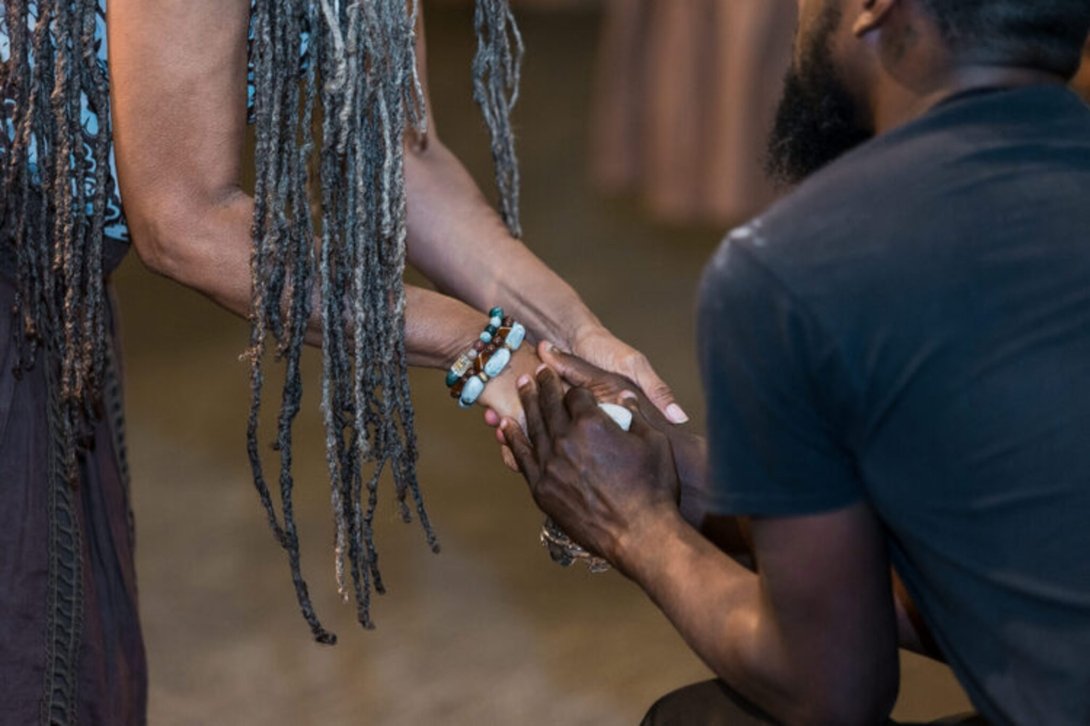7 Tips for Journalists from Restorative-Justice Practitioners

Dorrell Edwards of Always Timeless Productions
When Phillip Gatensby was called to work with men labeled gang members in a Canadian prison, he was also warned.
The warden had tried everything, he told Gatensby, and the men were unreachable. But Gatensby managed to build trust and connection over time.
“In my culture, they have a saying, a song they sing actually when they come to meet people,” said Gatensby, a co-founder of Restore Circles, an Indigenous-led restorative organization. “It says, ‘I’m going to open up this box of wisdom that was left in my care by my ancestors. You come and look inside there. If there’s something you need, take it. It belongs to you. If there’s stuff you don’t need, leave it.’ As simple as that is, saying that to them says ‘I recognize you have your own power.’ That changes the dynamics of the relationship. We spent 16 days together.”
Journalism is finally beginning to apply some of the tough questions it usually reserves for others to itself: Who has power here? Why do we make the decisions we make? And who benefits? Anyone watching this (slow, often reluctant) process can easily see a truth that has long dogged journalists: We’re terrible at self-reflection (and self-accountability). We might have been able to laugh that off as an industry joke 20 years ago; now the industry’s survival hinges on whether we can improve.
Journalist Allen Arthur had a eureka moment four years ago while working with people who’d been incarcerated. He realized that journalists could build healthier, less transactional and potentially even healing relationships with people if they learned from restorative justice.
Embrace magic in the moment
The culmination of that work is the guide Arthur wrote for Free Press: The Moment Is Magic, which contains seven tips from seven restorative-justice practitioners. What you’ll find inside are actionable, impactful steps journalists can take when having difficult conversations. We hope this guide reveals a new way of working, one that treats the other side of the “interview” as delicate, sacred and powerful.
Free Press’ News Voices and Media 2070 projects have ventured on similar journeys to revolutionize how media and journalism interact within — and connect to — communities. For News Voices, that looks like organizing with communities, journalists and newsrooms to build power and advocate for the news, information and narratives that people need to thrive. Media 2070 advocates for media reparations, a process to engage various sectors of media and philanthropy to radically transform who has the capital to tell their own stories by 2070. By understanding every story as sacred, these projects helped inform how restorative-justice principles can be applied to journalism.
And yes, engaging with those principles requires journalists to look inward.
“I call it spiritual archeology. You gotta do a dig inside yourself,” said Gatensby. The industry flirts with different interviewing and reporting choices, Gatensby said, “but [they’re] pretty easily distracted.”
Those distractions come from personal psychology, entrenched industry norms and regressive approaches that label certain communities broken. (The industry’s anti-Blackness, anti-indigeneity, racism and class issues play a big role here.) Instead, Gatensby calls us to “disrupt the fabric” of our work by consciously making healthier choices, choices the standard industry practices don’t offer.
“Sameness is safeness,” he said, “even though it may not be healthy.”
On the other side of that sameness, however, lives immense possibility: the possibility to build trust, to share in meaningful connection and to understand stories — all stories — differently. Journalists are not restorative-justice practitioners. But the experience of treating another person’s story with informed, intentional care and respect can be profoundly healing, said Marilyn Armour, a psychotherapist, professor and restorative-justice researcher whose work often focuses on survivors of violence.
“If you want to get across to journalists that there are ways they can engage … that will actually be healing, that is healing: for people to be able to hear themselves tell their story. They have insights. They put things together in ways they never have before.”
Journalism can participate in healing
The dozens of hours it took to create this Free Press resource underscored the need for journalists to pop their own bubble of savviness, to stop pretending that we’re the smartest observers in the room or somehow uniquely attuned to people’s motivations and inner lives. Those we interact with know that we’re often the opposite. In fact, several of the tips in this resource emerged in part from reporters’ mistakes (including Allen’s), like uninformed word choices and bungled interviews. This resource isn’t the product of perfection but of growth.
Each person who contributed to this resource shared similar ideas: Journalists know the story we want to tell before we even speak to sources; we substitute professional norms for humanity; we have a set way of telling stories; and we fail to capture or treat with care people’s hard-won life experiences. In fact, the opportunity to speak directly to journalists about how to treat people better inspired people to share their perspectives with us.
Yet our contributors also believe enough in the dream of journalism that they generously offered up their time to help us get it right. This is a common refrain: that people aren’t happy with journalism, but they’ve not given up all hope yet. They still think we can do better. That makes their assertions of journalism’s harmful histories and misguided narratives less an insult and more guidance toward a new way of working.
Fortunately, this is only one resource in a growing body to help us find that new way. Projects like News Voices and Media 2070 have been working with allies across the country to help visibilize all the powerful and beautiful things that are possible for the future of journalism. In many communities, journalistic harm is accepted as the norm, rather than the exception. The question this guide tackles is how we might heal that, together.